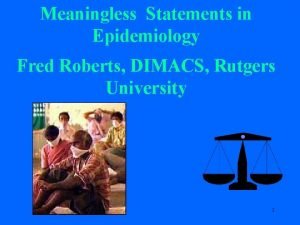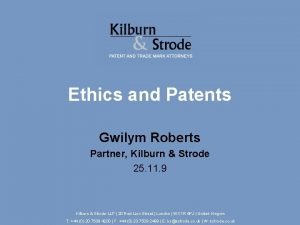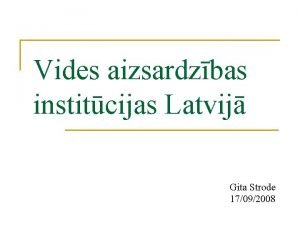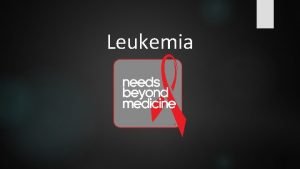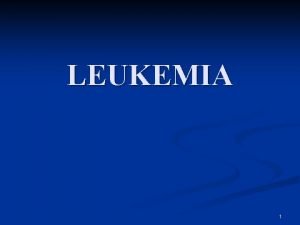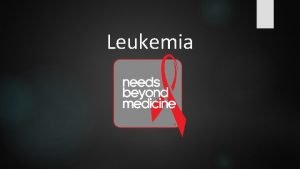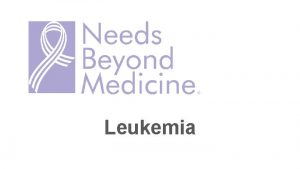Strode Note Meaningless title Leukemia Cell Study Strode











- Slides: 11

Strode Note: Meaningless title. Leukemia Cell Study

Strode Note: Too many words and no image. Background n. Acute Lymphoblastic Leukemia (ALL): cancer of lymphocytes (white blood cells) – Accounts for 25% of childhood cancers, making it the most common malignancy in children less than 15 years of age. – Occurs most frequently at 2 -5 years of age, and is more common in males and Caucasians. – Cure rates of ALL is approaching 80% percent. – Two different types of ALL are B-cell ALL and T-Cell ALL. § REH: type B-cell ALL cell line (immortalized cell) § Jurkat: type of T-cell ALL cell line.

Strode Note: Better but still no image. Background Understanding how cancer occurs may lead to the development of better chemotherapy drugs, and perhaps even a biologically targeted therapy. n Research is being done on the expression of Mer in Leukemia. n

Strode Note: Too many words and no image. Background n Mer tyrosine kinase: a protein that has anti-apoptotic signaling (anti-death) providing a survival advantage to the cells and transforming capabilities allowing normal cells to turn into cancer cells. Mer is not normally expressed in lymphocytes. – Mer is found in several cancers such as: § Gastric cancer § Pituitary adenoma § Mantle cell lymphoma § Alveolar rhabdomyosarcoma § Glioblastoma multiforme.

Strode Note: Avoid yes/no research questions. Question Does Mer play a role in the development of Acute Lymphoblastic Leukemia?

Strode Note: What’s wrong with this? Hypothesis I hypothesize that Mer will be abnormally expressed in the T-cell and B-cell Acute Lymphoblastic Leukemia cell lines REH and Jurkat, and certain patient samples.

Strode Note: I have no idea what “cell culture” is from this slide. Methods Cell Culture is a sterile procedure to grow cells for use in different types of experiments including PCR.

Strode Note: Too many words and no image. Methods Isolation of RNA and Preparation of c. DNA In order to perform PCR, the RNA (a single stranded genetic sequence) must be extracted from the cells then turned into c. DNA. This is done by exploding the cells to release its contents, digesting the DNA in the cells, then adding random decamers, which attach to pieces of RNA strands to form c. DNA.

Strode Note: Too many words and no image. See the next slide. Methods Polymerase Chain Reaction (PCR) n n n PCR is used to amplify DNA and to test for the presence of certain genes. Two PCR primers (short pieces of single stranded DNA that match the sequences of the genes you are testing for) and Taq (an enzyme that manufactures the DNA copies) are added to the c. DNA placed in a PCR machine to replicate. Double stranded c. DNA separates, primers attach to the strands, and Taq polymerase elongates the new DNA strands. New DNA strands separate and the cycle repeats. Amplified products run on a gel and imaged on a gel doc.

Strode Note: How about just this image and then walk us through how PCR works. Methods

Strode Note: I like putting acknowledgments first, right after the title slide. Acknowledgements n n n Dr. Kelly Sawczyn Dr. Amy Keating Dr. Dana Salzberg Dr. Doug Graham University of Colorado Health Sciences Center



